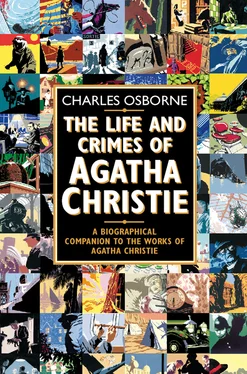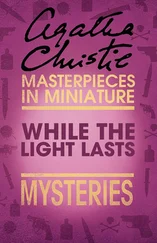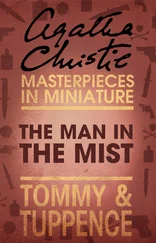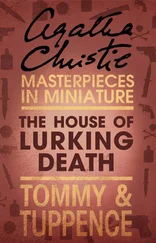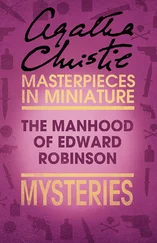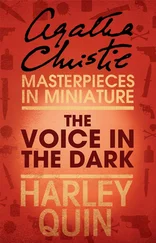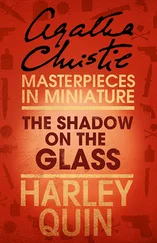1 ...7 8 9 11 12 13 ...29 Belcher had, by now, revealed himself in his true colours. The Christies found him for much of the time to be rude, overbearing, inconsiderate and oddly mean in small matters. He was continually sending Agatha out to buy him white cotton socks and neglecting to pay her for them. He behaved, Agatha remembered later, like a spoilt child, but had such immense charm when he was on his best behaviour that he was instantly forgiven. Tasmania forgotten, Agatha now thought New Zealand the most beautiful country she had ever seen, and vowed to go back one day. (However, by the time that air travel had made it possible to get there quickly, an elderly Agatha Christie had decided that her travelling days were over.)
After a lazy voyage, stopping at Fiji and other islands, Agatha and Archie arrived in Honolulu for two weeks’ holiday, while Belcher stayed with friends in New Zealand, after which they all embarked upon the last and most gruelling part of their journey, a tour of Canada. It was from the Banff Springs Hotel in Banff National Park, high up in the Rockies, that Mrs Christie wrote on 26 September 1922, to Basil Willett of The Bodley Head thanking him for a cheque for forty-seven pounds, eighteen shillings and ten pence. (But, in December, back in Torquay, she wrote again asking for accounts to be sent to her, and some weeks later had occasion to point out to Mr Willett that, since he had wrongly calculated the selling price of the American edition of The Secret Adversary, the exchange rate being $4.45 to the pound, The Bodley Head owed her two pounds, two shillings and three pence.)
Before setting out on her tour of the Commonwealth, Agatha had virtually completed a third novel, The Murder on the Links, the idea for which she derived from newspaper reports of a murder in France. Masked men had broken into a house, killed the owner and left his wife bound and gagged. There were discrepancies in the wife’s story, and a suggestion that she may have killed her husband. This led Agatha to invent her own plot, beginning several years later and in a different part of France.
Hercule Poirot having been a decided success on his first appearance, he and Captain Hastings were employed again in The Murder on the Links. The Bodley Head professed themselves pleased with the novel, but its author quarrelled with them over the jacket they provided for it. She thought its colours ugly and the actual drawing poor. In her autobiography she claims that the jacket was also misleading in that it appeared to represent a man in pyjamas on a golf-links, dying of an epileptic fit, whereas the character had been fully dressed and stabbed in the back. But, in fact, the murdered man, according to Mrs Christie’s text, wore only underclothes beneath an overcoat. Whoever was in the right about the jacket, a certain amount of bad feeling was engendered between author and publisher, and Agatha secured her publisher’s agreement that, in future, she should see and approve jacket designs for her books. (She had already had another difference of opinion with her publisher, during the production of her first novel, The Mysterious Affair at Styles, over the spelling of the hot drink, cocoa, which Miss Howse, an eccentric employee of the firm and described by Mrs Christie as a dragon, insisted should be spelled ‘coco’. Agatha produced dictionaries and even tins of cocoa, but failed to make any impression on Miss Howse.)
With The Murder on the Links, Agatha Christie returned to the murder mystery or puzzle type of novel, and to her team of Poirot and Hastings. Years later, she wrote of it:
I think Murder on the Links 6 Конец ознакомительного фрагмента. Текст предоставлен ООО «ЛитРес». Прочитайте эту книгу целиком, купив полную легальную версию на ЛитРес. Безопасно оплатить книгу можно банковской картой Visa, MasterCard, Maestro, со счета мобильного телефона, с платежного терминала, в салоне МТС или Связной, через PayPal, WebMoney, Яндекс.Деньги, QIWI Кошелек, бонусными картами или другим удобным Вам способом.
was a moderately good example of its kind – though rather melodramatic. This time I provided a love affair for Hastings. If I had to have a love interest in the book, I thought I might as well marry off Hastings. Truth to tell, I think I was getting a little tired of him. I might be stuck with Poirot, but no need to be stuck with Hastings too. 7 Конец ознакомительного фрагмента. Текст предоставлен ООО «ЛитРес». Прочитайте эту книгу целиком, купив полную легальную версию на ЛитРес. Безопасно оплатить книгу можно банковской картой Visa, MasterCard, Maestro, со счета мобильного телефона, с платежного терминала, в салоне МТС или Связной, через PayPal, WebMoney, Яндекс.Деньги, QIWI Кошелек, бонусными картами или другим удобным Вам способом.
The Murder on the Links is a more than ‘moderately good’ example of its kind. Until the diabolically ingenious solution, which perhaps fails to convince because of its very complexity, the action moves swiftly, the small seaside resort on the northern coast of France rings true and is not simply an English village in disguise, and the characters, lightly sketched though they are, all come vividly to life. The skill with which Agatha Christie manipulates her plot involving two crimes committed twenty years apart is quite brilliant. Occasionally, however, she displays an odd carelessness in matters of detail. For instance, the corpse of the murdered man is described when it is viewed by Poirot and Hastings. The face is clean-shaven, the nose thin, the eyes set rather close together, and the skin bronzed. We are told that the dead man’s ‘lips were drawn back from his teeth and an expression of absolute amazement and terror was stamped on the livid features’. The features, it is clear, are at least intact and undamaged. But Poirot finds a short piece of lead piping which, according to him, was used to ‘disfigure the victim’s face so that it would be unrecognizable’. Poirot’s theory of the crime, fortunately, does not hinge upon this point!
Since we are in France, Inspector Japp of Scotland Yard is not available to act as a foil for Poirot. This function is undertaken by Giraud, a young detective from the Sûreté who is already famous and inclined to pour scorn on Poirot’s old-fashioned methods. Agatha Christie has confessed that, in writing The Murder on the Links, she was influenced less by the Sherlock Holmes stories than by Gaston Leroux’s The Mystery of the Yellow Room. She must also have been reading A. E. W. Mason’s At the Villa Rose, for certain events at the Villa Geneviève in The Murder on the Links call the 1910 mystery classic to mind.
Since their earlier adventure in Essex, Poirot and Hastings have taken furnished rooms together in London. If you did not learn from The Big Four (1927) that their address was 14 Farraway Street, you would have sworn that it was 221B Baker Street, for the ambience is distinctly Holmesian, as is their landlady, who is difficult to distinguish from Sherlock Holmes’s Mrs Hudson. Captain Hastings works as private secretary to a Member of Parliament while Poirot pursues a retirement career as private detective, and Hastings finds time to write up Poirot’s cases, just as Watson used to chronicle those of Holmes. At the end of The Murder on the Links, it seems likely that Hastings will propose marriage to the auburn-haired beauty he has met, and there is even a hint that he, or they, may emigrate to ‘a ranch across the seas’. Mrs Christie, it would seem, was already laying her plans for the removal of Hastings from Poirot’s life.
Читать дальше
